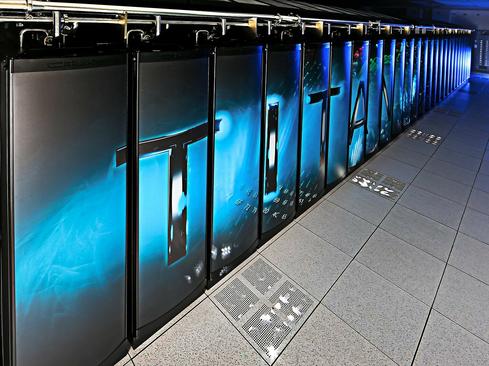Supercomputing's TOP500 Led By China, Linux
The latest TOP500 list of worldwide supercomputers shows several significant changes in what countries are leading the pack, and what technologies are most in use.


7 PaaS Startups To Watch
7 PaaS Startups To Watch (Click image for larger view and slideshow.)
Nations judge themselves against one another in many ways, including military strength, athletic prowess, economic might, and in the computing era, supercomputer speed.
Since 1993, the TOP500 supercomputers worldwide are ranked twice each year. The latest list, released June 20, marks two notable firsts. It's the first time ever the No. 1 supercomputer on the list was made entirely of components manufactured in China. In addition, this is the first time the US doesn't have the greatest number of supercomputer sites on the TOP500.
China leads the list with 167 supercomputer sites, compared with 165 for the US.
There's also a big point of commonality among the computers on the list. The vast majority use Linux as the operating system.
The TOP500 list is compiled by Erich Strohmaier and Horst Simon of Lawrence Berkeley National Laboratory; Jack Dongarra of the University of Tennessee, Knoxville; and Martin Meuer of ISC Group, Germany.
The No. 1 computer on the list is the Sunway TaihuLight, located at the National Supercomputing Center in Wuxi China. Not only is it the fastest computer on earth, it's the fastest supercomputer by a wide margin. With a top processing speed of 125,435.9 teraflops (billion floating point operations) per second -- or 125 petaflops -- the Sunway TaihuLight is almost three times as fast as the second-fastest computer -- the Tianhe-2 (Milky Way-2).
Located at the National Super Computer Center in Guangzhou China, the Tianhe-2 has a top processing speed of 54,902.4 teraflops per second.
No. 3 on the TOP500 is Titan, located at the DOE/SC/Oak Ridge National Laboratory, in Oak Ridge, Tenn.
The raw speed of the Sunway TaihuLight isn't the only factor raising eyebrows in the supercomputing world. It's also the way its speed is attained. The Wuxi-based supercomputer has 10,649,600 cores, more than three times as many as its nearest competitor.
Those cores are special in more than their number. The Sunway TaihuLight was built after the US government banned shipments of certain Intel processors to particular regions of China. So, the Sunway TaihuLight became the first Chinese supercomputer built entirely of components manufactured in China.
[Quantum computers could change the nature of supercomputing. Read Google Puts D-Wave Quantum Computer to Work .]
The Tianhe-2 is built on an Intel Xeon platform -- the processor used in most of the supercomputers in the top 10 of the 500. Every computer in the top 10 is based on a "full" microprocessor, in contrast to the GPUs that form the heart of many current-generation supercomputers.
When it comes to Linux, the great advantage of using the same operating system is to enable researchers around the world to share software efforts. For example, the software that splits workloads among the cores and schedules their processing is developed via open source projects.
The exaflop is the next tier in the supercomputer performance fight. According to the University of Tennessee's Dongarra, China is known to be working on an exaflop architecture now, while the US is not scheduled to have an exaflop machine for another half-dozen years.
There are many factors that go into how much of a supercomputer's power is usable. Memory speed, memory capacity, interconnect speed (the speed of the matrix that connects all the processors), and the ability of a problem to be spread among the maximum number of processors all play into usable speed. The foundation, though, will always be overall computer speed, and for at least the next six months, the Sunway TaihuLight reigns supreme.
The first version of what became today’s TOP500 list started as an exercise for a small conference in Germany in June 1993. Out of curiosity, the authors decided to revisit the list in November 1993 to see how things had changed. About that time they realized they might be onto something and decided to continue compiling the list, which is now a twice-yearly event. To view the full list of June 2016 supercomputing sites, click here.
About the Author(s)
You May Also Like
How to Amplify DevOps with DevSecOps
May 22, 2024Generative AI: Use Cases and Risks in 2024
May 29, 2024Smart Service Management
June 4, 2024







